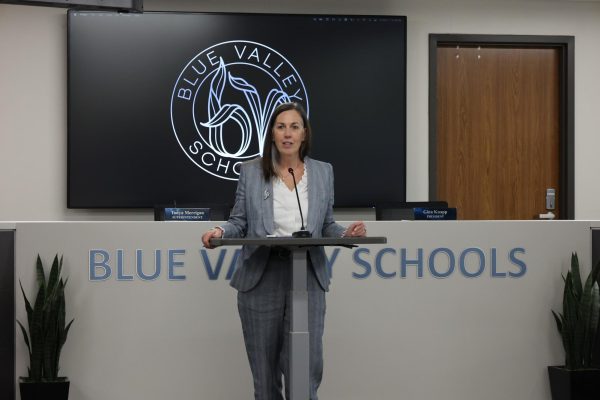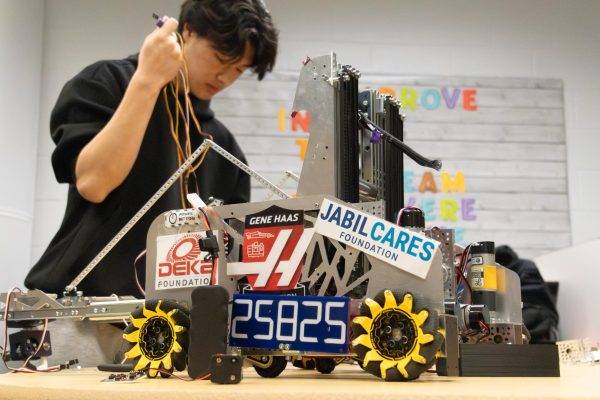How Biden’s American Jobs Plan could affect BVNW
Students and staff voice their opinions about the proposed plan
Joe Biden announced his approximately $2 trillion American Jobs Plan, which aims to create jobs, repair aging infrastructure, and invest in areas like childcare and greener energy.
Recently, Joe Biden announced his approximately $2 trillion American Jobs Plan, which aims to create jobs, repair aging infrastructure, and invest in areas like childcare and greener energy. To pay for this plan, Biden proposed a tax increase for corporations, which he said will pay off the plan in about 15 years.
Within the plan, Biden sets aside $100 billion for upgrading and building public schools, $45 billion to replace all lead pipes in the country, and $100 billion for the expansion of broadband internet.
Government and We the People teacher Ken Thomas said that Joe Biden wants the American Jobs Plan to be passed by Memorial day, and said that the president has had a good track record of setting and meeting goals, like his goal of having 200 million COVID vaccines within his first 100 days in office, which was met in 92 days.
Thomas explained that in order to pass the bill, the Democrats would have enough votes to pass the bill through the budget reconciliation process, which he thinks the Democrats would do if the bill does not get the 60 votes that it needs, which would require 10 Republican votes. Because the Democrats control the house, Thomas said that it would probably pass through the House and then be sent on to the president.
“Under certain circumstances, I believe there are like three times a year, the Senate has the ability to pass bills through budget reconciliation. This would be a bill that, like the previous rescue bill, was passed by President Biden and the Senate and the House. That means they don’t need to have 60 votes, a pure majority will suffice to pass the law,” Thomas said.
In order for both parties to come to a stable agreement, Thomas thinks the Democrats and Republicans need to come to a common definition of infrastructure, and work outwards from there.
“To me, infrastructure is something that is used by the people as a whole for the necessities of life. That would be electricity, that would be power, that would be sewage. Nowadays, you would have to include things like, in my opinion, Broadband,” Thomas said.
If the plan passed and BVNW were to receive a portion of the funds, freshman Saraphina Wambi thinks that money spent on more diverse books would be beneficial to students. Wambi hopes that the inclusion of more books will expose more people to POC groups and history.
“I think that we should invest money into helping students at BVNW become more exposed to more cultures around the world. Specifically, Native American culture, because we do live in the United States, and Native American culture is a big part of our history,” Wambi said.
Sophomore Norah Alasmar would prefer the money be spent in a different way. Alasmar drives herself too and from school everyday, and thinks that it would be beneficial if the money went to making this commute easier.
“I think it would be best spent renovating the school parking lots, because before and after school there’s a lot of traffic, and I think adding more entrances and exits would be a lot better for the community,” Alasmar said.
In addition to speeding up the time it takes to get to and from school, Alasmar said that she thinks the addition of exits and entrances to the school parking lot would decrease the amount of accidents.
Sophomore Merrin Dillavou takes a completely different angle, and thinks that other places in America need the money more.
“I honestly don’t think Northwest needs the money, I think it would be best spent going towards less privileged places in America, or places where teachers are just volunteers or don’t have the credentials that they do in other places. I think this would give more students the opportunity to have a continued education after high school,” Dillavou said.
Dillavou thinks that putting the proposed funds into other schools in less privileged areas will give students opportunities that their parents didn’t have, which could cause a decrease in generational poverty- or poverty that persists more than two generations, where individuals have few resources to pull themselves out of their position.
“I think that by increasing funding to schools like this, we would be able to help out the community as a whole, and society as a whole much more than if we were to change a physical thing for Northwest,” Dillavou said.
Thomas said that the students and staff of the Blue Valley School District are in a community that understands the importance of education, and is more affluent than many other communities in the United States. If or when the District needs money for infrastructure, many of the people in the Blue Valley School District, Thomas said, are willing and able to pay more into things like property taxes, that go and benefit schools.
“When I was first out of college and interviewing for jobs, one of the first interviews I had was in a small town outside of Lincoln, Neb.. The high school that I went to interview in was built around 1900, so it was 90 years old. It had huge windows in every room, and a lot of the windows had plywood over them because the window structures were so deficient that they couldn’t really hold glass anymore, so they just put plywood up,” Thomas said.
Situations like this one, where schools are dilapidated and run-down, are where Thomas believes the funds of the plan will be spent- fixing or replacing decades worth of aging infrastructure in the U.S., like lead pipes, and the electrical grid, along with increasing Broadband coverage in rural areas.
“You probably remember when we would have something during advisory, and everybody in the school would get on, and basically the system would shut down, that was overloading the infrastructure of the Broadband system- we had too many people on the internet at that time, and we didn’t have the Broadband capability to handle that,” Thomas said.
Thomas says that the school district is going to have to continue to adapt and update to keep the technology up-to-date.
“I would say that the biggest problem as far as infrastructure, would be probably making sure that we stay on top of the Broadband issue, and understanding that as new computers come out, they require more and more power and more and more Broadband to run the applications that we are going to need to teach,” Thomas said.












